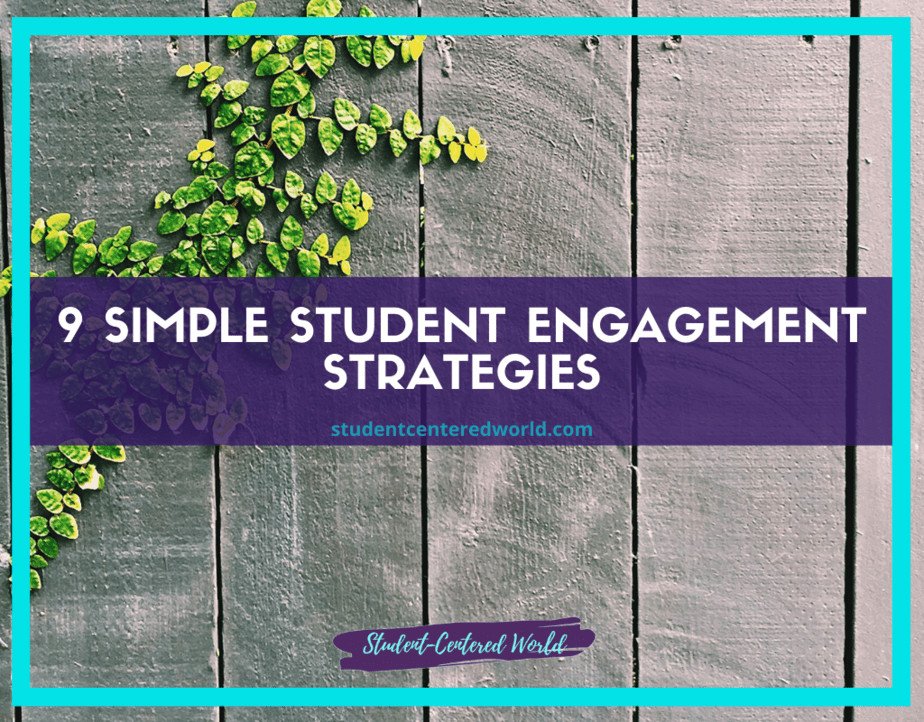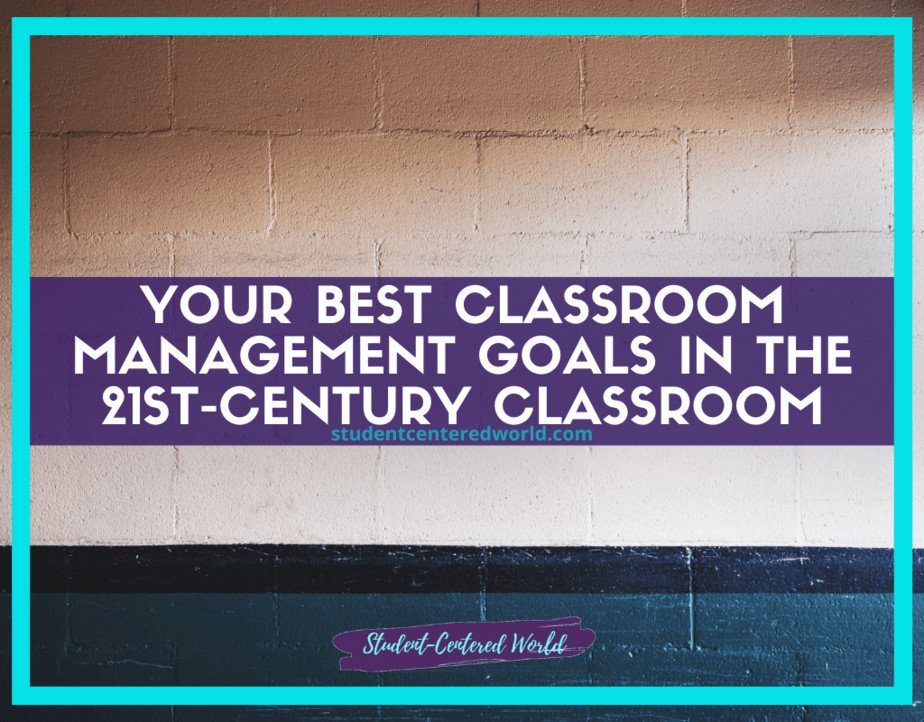How to Measure Student Engagement in the Classroom: 7 Easy Ways
Click above to listen to this podcast episode. Below is the transcript for Student-Centered World Podcast Episode 53: “How to Measure Student Engagement in the Classroom“
As a teacher, it is in our DNA to try to come up with lessons that not only get our students excited to learn but also get us excited to teach. There is nothing worse than thinking a lesson is going well and then realizing once you are at the point of no return that it is missing the mark with your students. It is important to be doing checks that are automatically implemented into any lesson to make sure that not only is the information sinking in, but plainly stated, you are able to measure student engagement in the classroom. If you’ve ever wondered how to measure student engagement in the classroom, read on.
How to Measure Student Engagement in the Classroom? Simple: Measure attendance and participation. Right?
Well, not exactly. That’s what we’ve been doing for years and it isn’t working well enough. Let me introduce you to a different engagement metric that has been shown to be more reliable than testing or quizzes; one that does not depend on active student learning; and one that is more valid than simple attendance.
What is this magic metric? Student self-reports of interest in their course.
Interest? Yes, interest. Researchers at UC Davis have shown that student engagement is predictive of almost every learning outcome you care about, including higher grades and test scores, better retention, more time on task, greater motivation to learn, deeper conceptual understanding, more successful transfer of learning to new contexts, and better ethical reasoning. So it’s worth trying to measure.
Interest? I was always taught to ignore student interest as a reliable or valid indicator of learning. How can this be true?
Is this really how to measure student engagement in the classroom? Simply put, yes. Student interest is a better predictor of learning than simple testing or grades.
Of course, that isn’t the only answer to the “how to measure student engagement” question, but it gets the wheels turning.
How to Measure Student Engagement in the Classroom: Ask students to complete a short check-in activity about the lesson
There are so many ways you can check in on the information that was explored each time you teach a particular topic while determining how to measure student engagement in the classroom. From post-it notes to Google forms to stand-up/sit-down games, there are seemingly a million and one different ways to check on each individual student’s understanding of the material.
As you move forward in the curriculum, it is important to make sure that the information that is a prerequisite to the next topic hits its mark appropriately. This will give you an idea of how well the students are grasping concepts that you were planning to teach for the next few days, how they think about how those ideas fit in with other things, and how much their interest has dwindled as time went on.
These check-ins don’t have to be graded, they just need to be completed so you can have a solid grasp on any holes in the content and can develop a quick plan to sew them up.
Asking your students to do a short quiz or write down how they feel about the material that you are teaching can help you get a sense of how engaged they are in the content. The information that comes from these check-ins will either fill in any holes, confirm how much more they need to discover, or show how much they have progressed.
This also opens up opportunities for real-time feedback that will help cure any confusion in an efficient manner so that you can move forward with the lesson at hand.
It also gives students a chance to reflect on what they are learning each day. This is important for a variety of reasons. It allows the teacher to check how well the prerequisite knowledge was presented in the first place, how much information from the actual lesson was digested, and any missing pieces that need to be adjusted in the next lesson and helps to answer how to measure student engagement in the classroom and if it’s effective.
To find out how engaged your students are on a regular basis, make sure to ask questions or have them write down how they feel about what is happening at the moment.
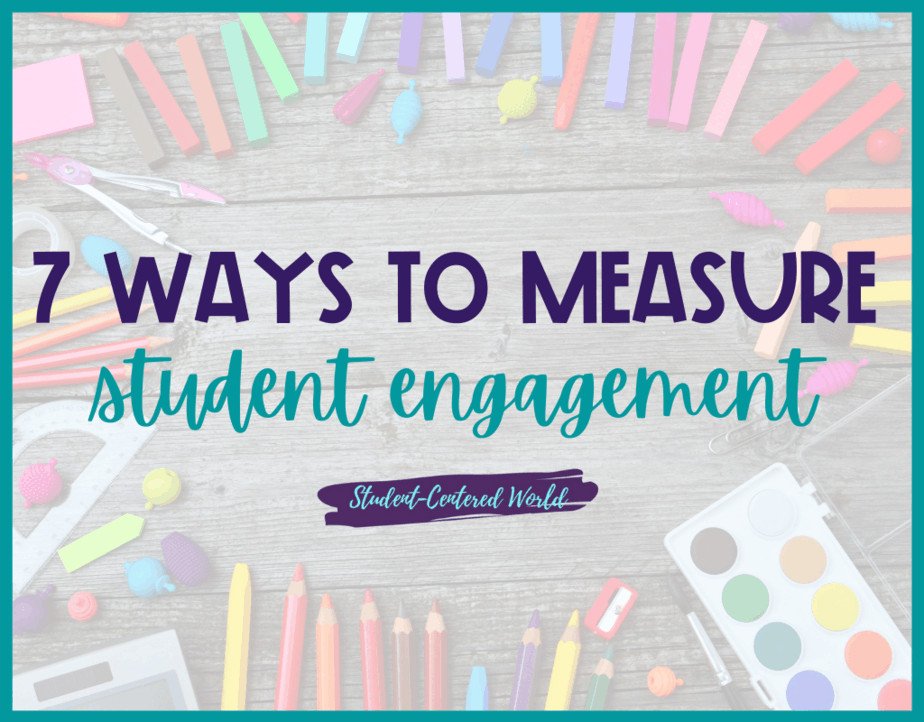
How to Measure Student Engagement in the Classroom: Ask how it’s going and how you can help
This is an easy idea on how to measure student engagement in the classroom. Having a “coffee” with each student at various points throughout the lesson and/or school year will give you an idea of how excited they are about learning and how much direction they need in order to stay engaged during class time. This can be more formalized if it is a check-in that happens throughout the year (and yes, you can always involve snacks during those meetings!) or it can be an informal, quick conversation as you circulate around the room.
Too many students to have meaningful conversations? Keep a list of 5-10 students you speak with each day in regards to this and keep them in a consistent rotation.
Also, open up classroom doors to how you can help a student out throughout the year. Are they in a difficult class? Are they having trouble with a certain subject? Do you have extra time before or after school that you could offer to meet with them? Let students know how much support they have during the course of their studies through this channel. This in and of itself will increase student engagement because the student will feel safe and respected in your classroom.
Have students take an interesting inventory about how interested they are in each lesson topic, how excited they are to be at school, how much effort they’re expanding toward their studies, how confident they feel that they will succeed and how they perceive how much their teachers care about how well they do in the class. This may take a little skill, but this will allow you to see how engaged your students are with topics and how close/far away they feel from being successful and can help to answer how to measure student engagement in the classroom.
How to Measure Student Engagement in the Classroom: Observe student reactions and interactions with classmates during lessons
This is something you should be doing every day, but as a way to measure how engaged they are with what is being taught. It gives you the chance to make adjustments in how you go about teaching and what students need extra help on.
There are a number of reactions and interactions that you should be on the lookout for when determining how to measure student engagement in the classroom. These include…
– Students who seem to not care
– Students who appear to be paying attention or engaged with the lesson
– Students whose attention wander off task or are inattentive (face buried in a book, cell phone out, lights out, asleep)
– Students laughing, playing around, or moving their desks (shuffling papers, tapping feet or legs on the desk)
– Grouping of students who are more than likely goofing off and not engaged in the class. You should make a mental note of how many there are and how they are grouped together so you can talk to them later about how you noticed how they were not paying attention and how this lesson is important for them.
– Students who raise their hands to give answers or participate in discussions on projects or activities. This means they are engaged with the lesson plan, either interested in what you are teaching them or they want to share an idea. Either way, it is a good thing because it means they are engaged.
Also, how they interact with each other during class can give insight into how much of an effect their group work is having on how they work together as a class. Keeping data on this is important so you can keep track of any patterns emerging and further answer how to measure student engagement in the classroom.
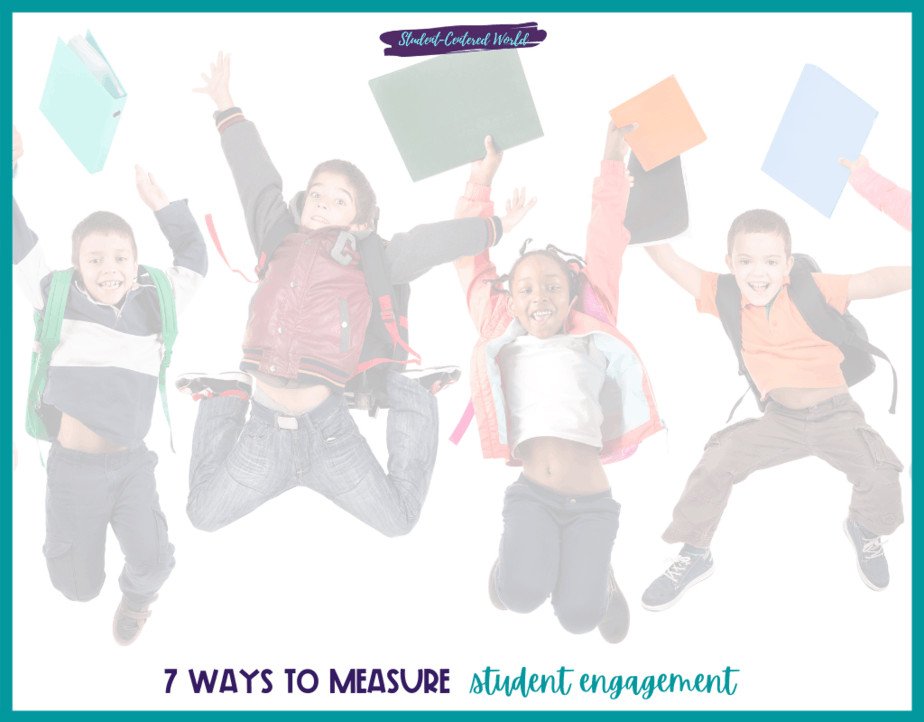
How to Measure Student Engagement in the Classroom: Do some polling to get a more exact idea of how engaged the students are with current concepts
Students should feel comfortable approaching you for any help or guidance. Have them write down how much they think each classmate is understanding and what can be done to help make it better. They will be a lot more open to how they handle the situation if you are not around.
Ask them how they feel about how things are going and how well they understand what is being taught. Before asking, make sure you’ve provided some examples of how they will be using the knowledge soon enough. You can also find out if everything makes sense or how certain concepts affect other concepts.
Also, check out how they interact with you and your teaching style. Are they comfortable talking to you when it’s necessary? Do they approach you for help or do they get nervous and shy away from it? Do some of them tend to ask questions in class? Find out how they feel about how you conduct the lesson and how well they are able to adapt. This will truly guide your answer on how to measure student engagement in the classroom.
How to Measure Student Engagement in the Classroom: Review the number of times students ask questions in class
If you are asking how the lesson is going and how much students are understanding it’s important to be able to gauge how well they understand something by how many questions they ask. This is a good way to measure student engagement in the classroom because if you hear any other responses than yes or no you can quickly delve into what needs help. The more you know, the more you can help.
Examine how often students ask for help when they need it. Check how many of them tend to bother others with similar questions. Make sure it is not just one or two people asking most of the time with everyone else ignoring their need for guidance. This will show how much help students need to learn the lesson or how many students are just not interested at all.
While you’re listening to how often questions arise in class, how about observing how many of them ask the same question over and over from different angles? You can do this by writing down how many times each person asks a certain question. Doing so will give you a good idea of how much help students need to learn how to find the answers themselves.
The more often students need help with something, the less they are engaged in what is going on and its a great way to know how to measure student engagement in the classroom. If you’re observing how many times a student asks for help it’s best if you count how many times per lesson or how many total times they ask for help. This will give you a better idea of how well students are engaged and how much work they need to learn how to teach themselves.
You can measure how engaged a student is by how much interest they have in what was covered and how much knowledge they retain after lectures end. The better it goes, the better chance students have of understanding what was covered and how it went will tell how well students are retaining what they learned.
Examine how often students participate in class by writing down how many times each speaks up as compared with how many people there are in the class. The goal is not just to count them but also how often and how much each person speaks up. Write how many sentences a person speaks as well if you have the time to do so. Make sure to write how many questions are asked each by students, how many comments are made about the lesson, and how many times each student answers a question that was asked by someone else
How to Measure Student Engagement in the Classroom: Observe student behavior when you enter the classroom before starting your lesson
This is how you can measure how much they are paying attention to and how engaged they are. If students don’t feel like a lesson is going to be anything worth their time there will be laziness and boredom on their behalf.
In order to get a good feel for how engaged they are in your lesson, you can ask students how well prepared they are. You could say something like “It looks like we have all the materials needed. Do any of you know how well prepared we are?”.
Honestly, one of the best ways you can measure how engaged your students are is by asking how well prepared they feel for the upcoming lesson. You could say something like “How well prepared do you think we are?” or “Do any of you have any questions about how well prepared we are?”. It makes them think about what is happening in the classroom from a different angle than just a content-based one and helps not only hone in on which students aren’t engaged, but also helps spark them into the activity as they look at it differently than they were before.
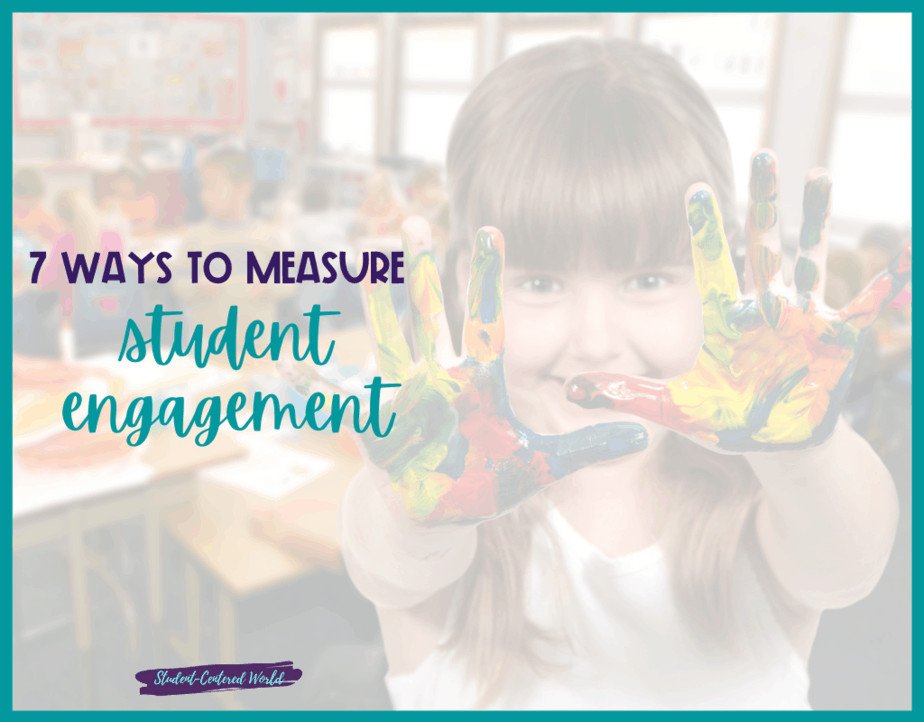
How to Measure Student Engagement in the Classroom: Make sure students are involved most they can be
Students get how easy it is to lose interest and how if you find something that interests them, it will come out in how engaged they are. Finding things that interest your students and making sure they know how much of an influence their input and ideas have on how they learn will make sure their learning experiences are effective.
Pay attention to how they interact with each other and how much help they show to others when it’s necessary. If there is someone who seems to be not as engaged as everyone else, go approach them and see what you can do about it. You will probably find that their needs are completely different than how you thought they were.
To help track how engaged each student is throughout the duration of the lesson, try dividing the class into smaller groups. Have them complete an activity that requires a lot of hyper-focused attention in order to succeed. Then tally how many teams managed to finish how many laps around the room or how many questions they answered correctly as a team.
This small group work will also give you a better chance at connecting with each student while they are more focused and have a smaller amount of people to moderate.
Stop Driving the Teacher Struggle Bus
Are you struggling with student engagement, apathy, or keeping your class on track?
💫💫 There’s hope! 💫💫
Join my free teacher workshop “Choosing Choice” and in just 60 minutes, you’ll craft a practical plan to revitalize your teaching. Discover the magic of student choice in boosting engagement, gain quick implementation ideas, and explore strategies for year-long success.
Unlike overwhelming workshops, my approach guides you in real-time, providing more classroom options, reducing stress, and giving you more personal time.
Plus, you’ll earn a 1-hour professional development certificate and have 7 days of access.
Don’t miss this chance to transform your teaching; click below to secure your spot now!
